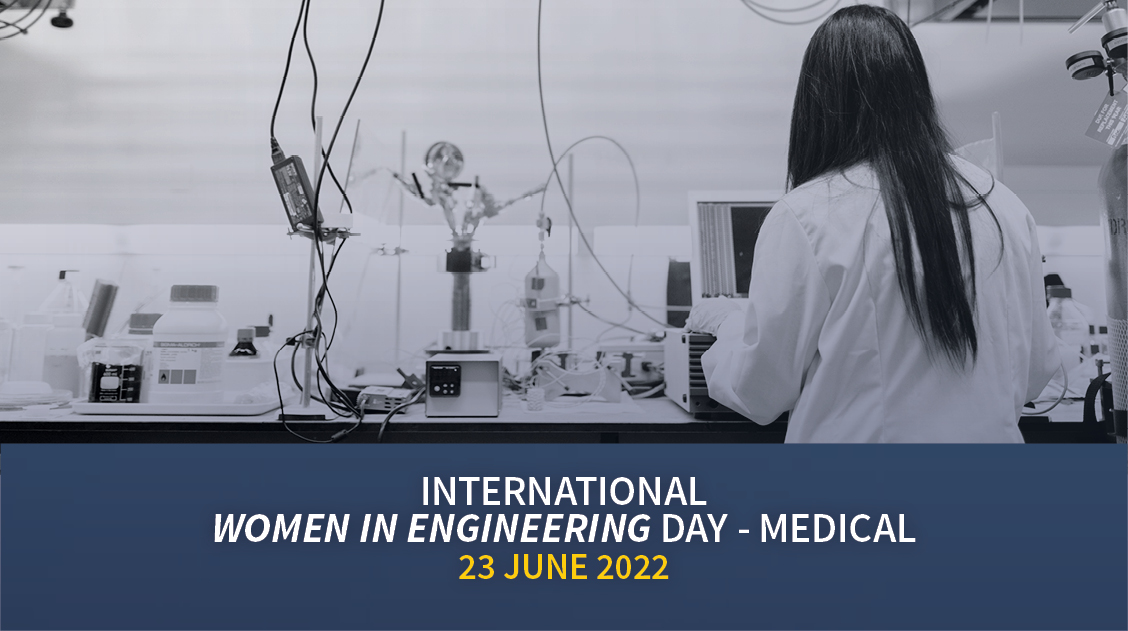
How Women in Engineering are Redefining Medical Sciences
When thinking of medical professionals, we think of doctors, nurses and frontline healthcare workers. Yet, it is important to remember the scientists and engineers developing new medical technologies. At MDPI, we’re focusing on the amazing women in engineering whose work is changing healthcare sciences for the better.
Developing New Diagnostic Tools
Technology to aid doctors in diagnosing conditions is vital as medicine advances, a pursuit of knowledge that women in engineering are paving the way forward in. With the fast development of microdevices, also known as microelectromechanical systems (MEMS), interest has peaked in fluid flow research.
Microfluidic systems are more advantageous compared to macroscale models as they require smaller sample volumes. This means that often parallel operations can be achieved in a single step. However, there are still drawbacks to microfluidic systems, despite the growing attention they have received in the past decade. Often, it is difficult to achieve cost-effective, large-scale production. A scientific downside is the lack of understanding of fluid physics in biological species. Scientists are trying to understand this in order to enable the application of microdevices for point-of-care diagnostics, e.g., blood analysis.
New Methods for Analysis
The Special Issue “Micro/Nano Devices for Blood Analysis”, published in Micromachines, discusses the recent advances in blood analysis. It contains 11 research papers on the topic, and has been published by MDPI Books. The Special Issue is guest edited by Prof. Dr. Graça Minas and Dr. Susana Catarino, alongside Prof. Dr. Rui A. Lima, all from Minho University, Portugal.
Included in the Special Issue is a review written by the Guest Editors, which gives an overview of current blood cell separation and sorting methods. The review discusses “an overview of the microfabrication
techniques, especially for biomedical applications, as well as a synopsis of some design considerations regarding microfluidic devices. The blood cells separation and sorting techniques
were also reviewed, highlighting the main achievements and breakthroughs in the last decades.”
A Special Issue that highlights women in sensor development, both in medicine and beyond, is available in Biosensors. “Women in Biosensors” “celebrates and highlights the achievements of women in the biosensors research area”. The Special Issue is currently open for submissions.
One current submission is titled “Non-Enzymatic Detection of Glucose in Neutral Solution Using PBS-Treated Electrodeposited Copper-Nickel Electrodes”, by Dr. Aida Ebrahimi et al. The manuscript focuses on the development of a non-enzymatic sensor for glucose detection. The research shows how nickel and copper can be used in a near-neutral solution to detect glucose. This process usually uses a highly alkaline electrolyte, which damages the sensor and can be hazardous to handle. This advancement improves a currently used detection method, optimising it for the future.
“Women in Biosensors” is open for submissions, so if you’re interested in submitting your research, please check the website .
Information Technology and Healthcare
Engineering is a very broad term, which extends to information technology. MDPI recently published the book “Computational Intelligence in Healthcare“, based on a Special Issue of the same name. It was guest edited by Dr. Giovanna Castellano and Dr. Gabriella Casalino, both of the University of Bari Aldo Moro, Italy.
The Special Issue focuses on computer intelligence methods, such as fuzzy models, big data and data mining, in healthcare.
One article, written by the Guest Editors, discusses using genetic algorithms to analyse ovarian cancer gene expression profiles. By using a method which selects features amongst genes, and a set of if–then rules, the final model consists of 10 genes involved in ovarian cancer’s molecular pathways and 10 rules that correctly classify all samples.
A featured paper, published in Sensors, also uses new technologies to study frailty in older adults. By fitting participants (age 70+) with sensors, a model was built. The model took into consideration hip angular velocity, vertical power and variation in vertical power. Using these features, digital biomarkers of frailty can be determined. The findings could help design low-cost sensor-based technologies for remote physical frailty assessments.
All the papers and Special Issues mentioned herein have female authors or Guest Editors, and all are at the forefront of science and healthcare engineering. Women in Engineering, in all fields, are vital to advancing scientific research.











Im interested
Thank you for your interest, Oke!
You can find out more about our journal submission process here: https://www.mdpi.com/authors